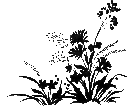 |
The Preserve |
News and Events |
Natural History |
The Trail |
Monitoring |
Restoration |
Library |
Organization |
|
Todmorden Mills Wildflower Preserve
|
Nature NotesYour Nature Guide for the week of September 13-September 19WildflowersIn the sunnier spots on the trail, and in the open areas, the stems and leaves of Dog-strangling Vine, deep-green until recently, have turned yellow and begun to wither. The ripe pods have dried and split open and the silken-plumed seeds are spilling out. The die-back has starkly revealed the extent of infestation of this serious invasive plant. A member of the Milkweed family, Dog-strangling Vine now grows in dense swaths and threatens Todmorden and the lower Don valley by preventing the establishment of native plants. FernsAs the woodland wildflowers die back and the forest floor starts to turn brown, the persistent green of fern fronds is welcome. Ferns are an important component of forests in southern Ontario, and they are being re-introduced to Todmorden. At the end of the boardwalk, look for three species which have been planted in recent years: Marginal Wood Fern has spores along the margins of the leaflets (pinnae) on the underside of the frond. Christmas Fern, which stays green all winter (hence the name), prefers shady sites and has been planted at the base of some of the huge Crack Willows just south of the boardwalk. Ostrich Fern has plume-like fronds and can grow in large colonies on floodplains. Look for it alongside the boardwalk in moist areas. InsectsGoldenrods, whose flowers are still blooming profusely, currently provide some of the best insect-viewing opportunities at the Preserve. The diversity of beetles, flies, bees, wasps and butterflies at a clump with fresh, yellow flowers can be somewhat overwhelming. One of the most distinctive beetle visitors is the Locust Borer. While the yellow and black adults feed on Goldenrod pollen, the beetle's name derives from the larvae which feed on the sapwood of Locust trees. At Todmorden, the adults likely developed in the Black Locusts which line the Oxbow adjacent to the meadow. The number of large dragonflies flying above the meadows at Todmorden has increased recently as migrants from other parts of Ontario congregate. Common Green Darner dragonflies are known to migrate south to winter in the Gulf Coast. VinesTwo of our native vines, Riverbank Grape and Virginia Creeper are fruiting at present. The fleshy berries are being plucked and eaten by birds, including migrants passing through, and by Grey Squirrels fattening up for winter. Both vine species are colonizers of forest edges and clearings, where they clamber up shrubs and trees. Riverbank Grape, especially, is widespread in the Preserve, and in some places vines are so large and woody that tree branches have snapped under their weight. Volunteers have had to prune back vines off young planted shrubs in some of the recently-cleared restoration sites. Where it carpets the ground, Virginia Creeper can be confused for Poison Ivy, especially now as their leaves turn red. Virginia Creeper has leaves with five leaflets rather than three, and the leaf margins are serrated. Poison Ivy is rare at Todmorden and fortunately does not grow close to the trails, but it is found in patches throughout the lower Don valley, and in some cases right next to the bike trail. Nature Notes is researched and written by Mike Dennison and Alejandro Lynch, and is published each week by Hopscotch Interactive (www.hopscotch.ca). In addition to this online version, Nature Notes is available as a print-friendly PDF and as a text-only email version. Please contact Mike Dennison to receive these, or for more info (tel: 416-696-7230, email: dennison@hopscotch.ca). |
| Copyright © 2003-2004 Todmorden Mills Wildflower Preserve |